Ernesto Renda
works exhibitions news about
dithering
Viewing Room | September 29 - October 17, 2020
request preview
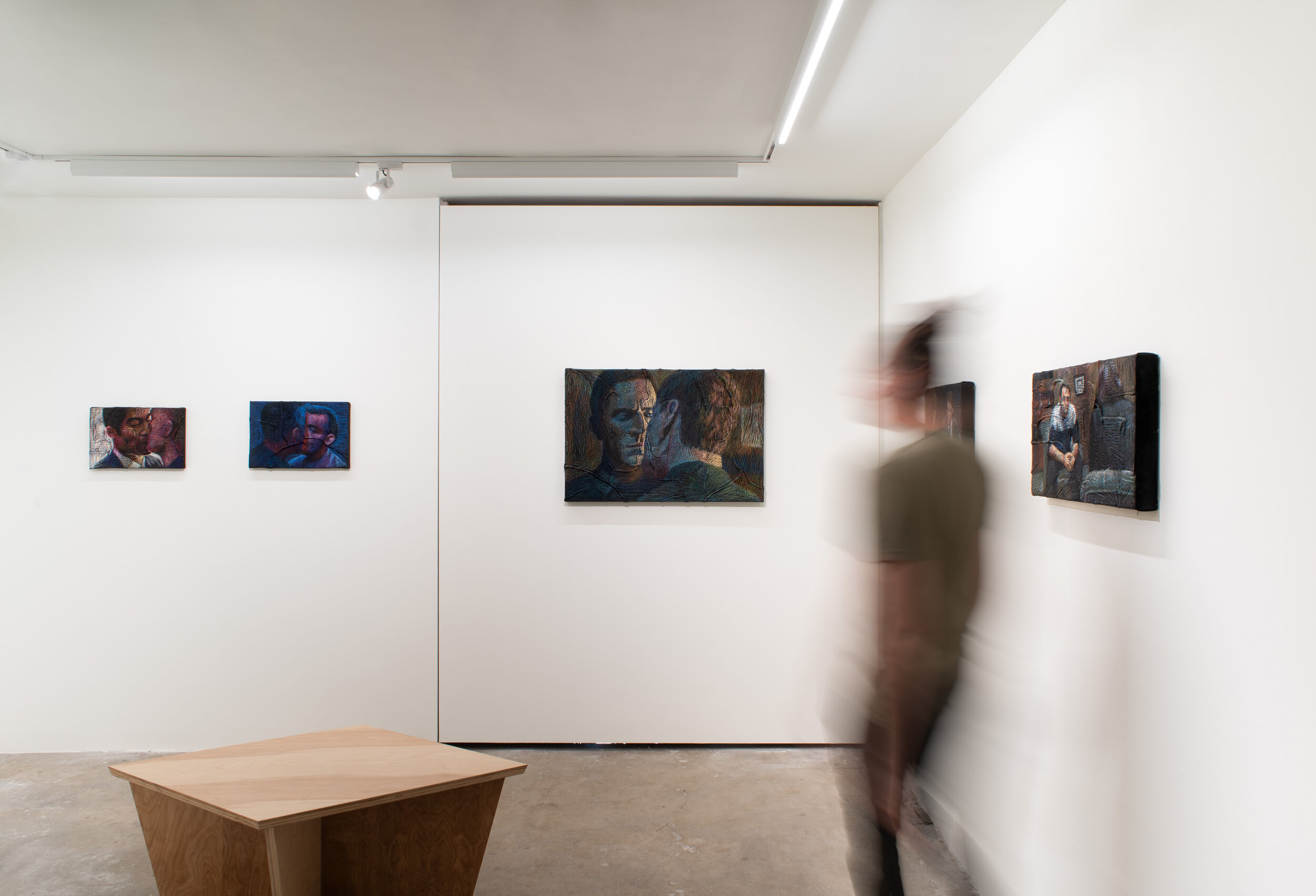
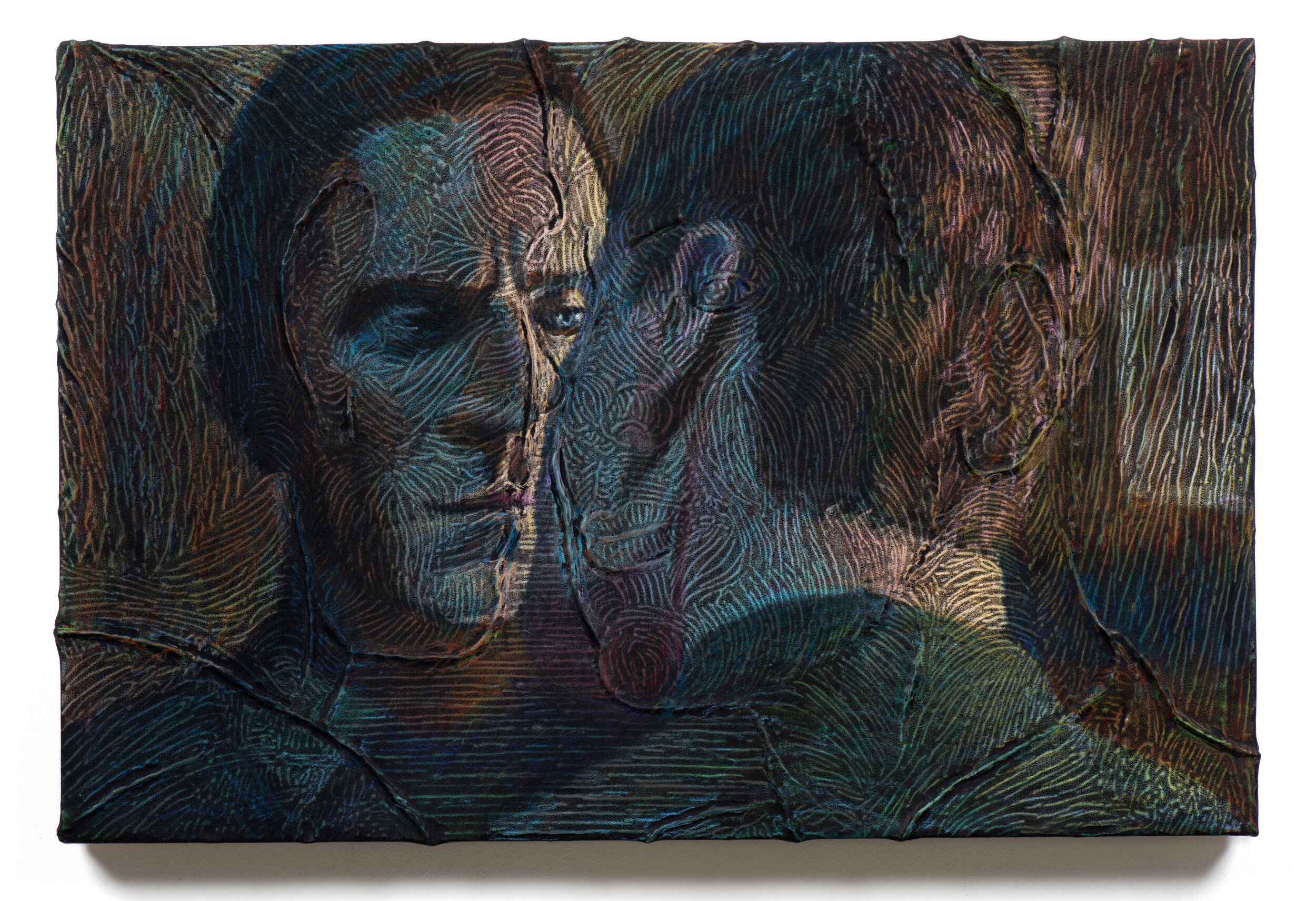
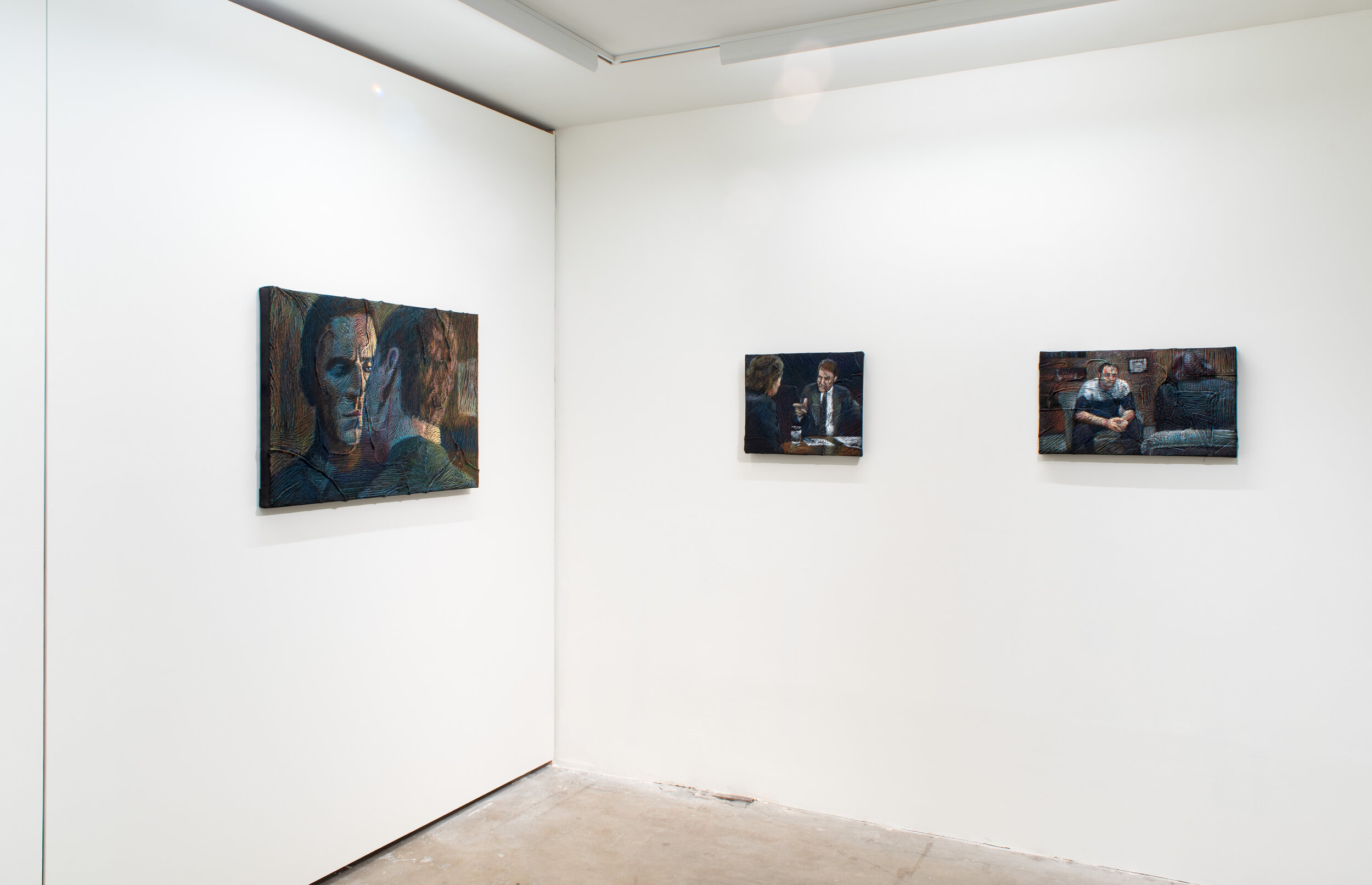
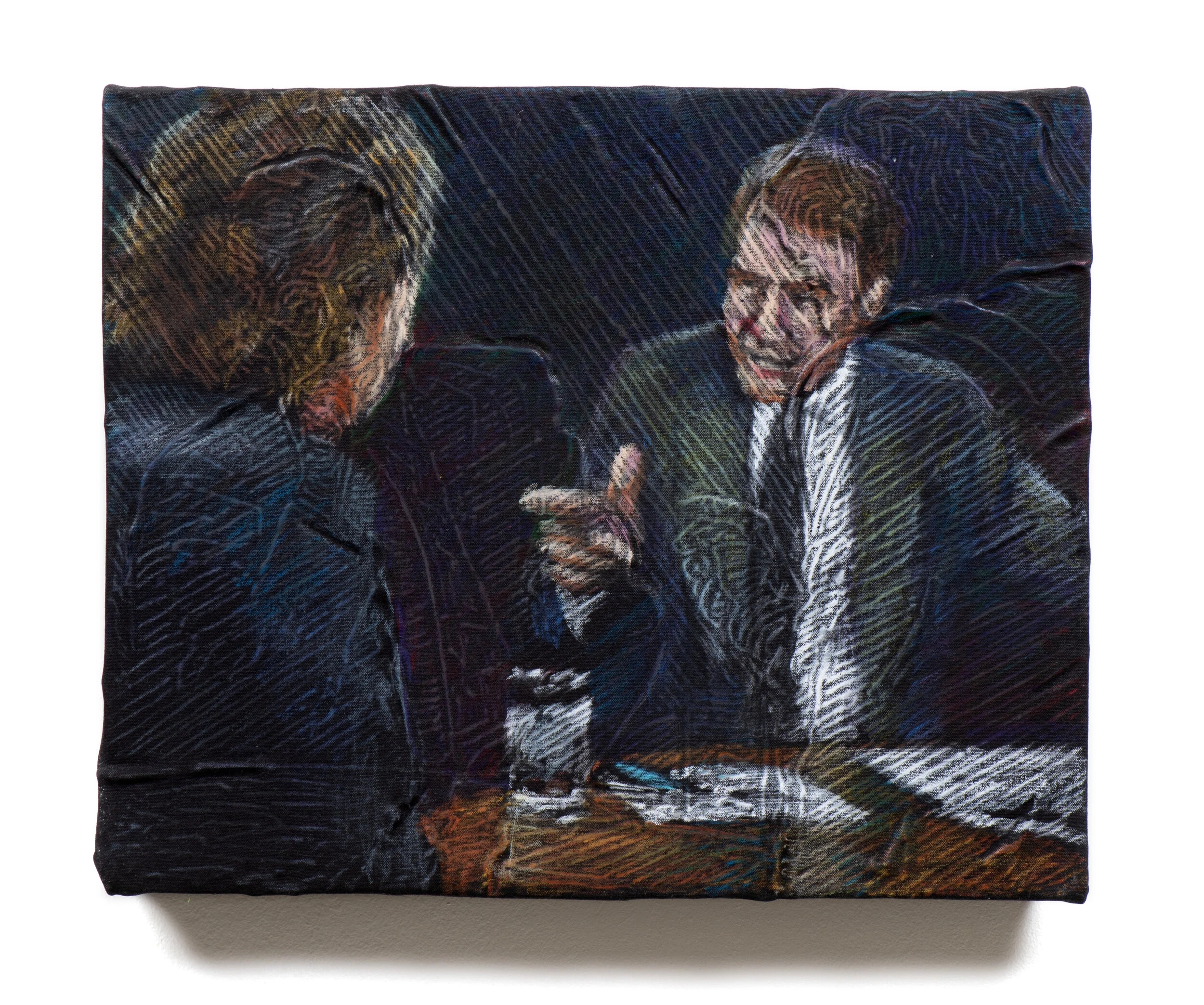
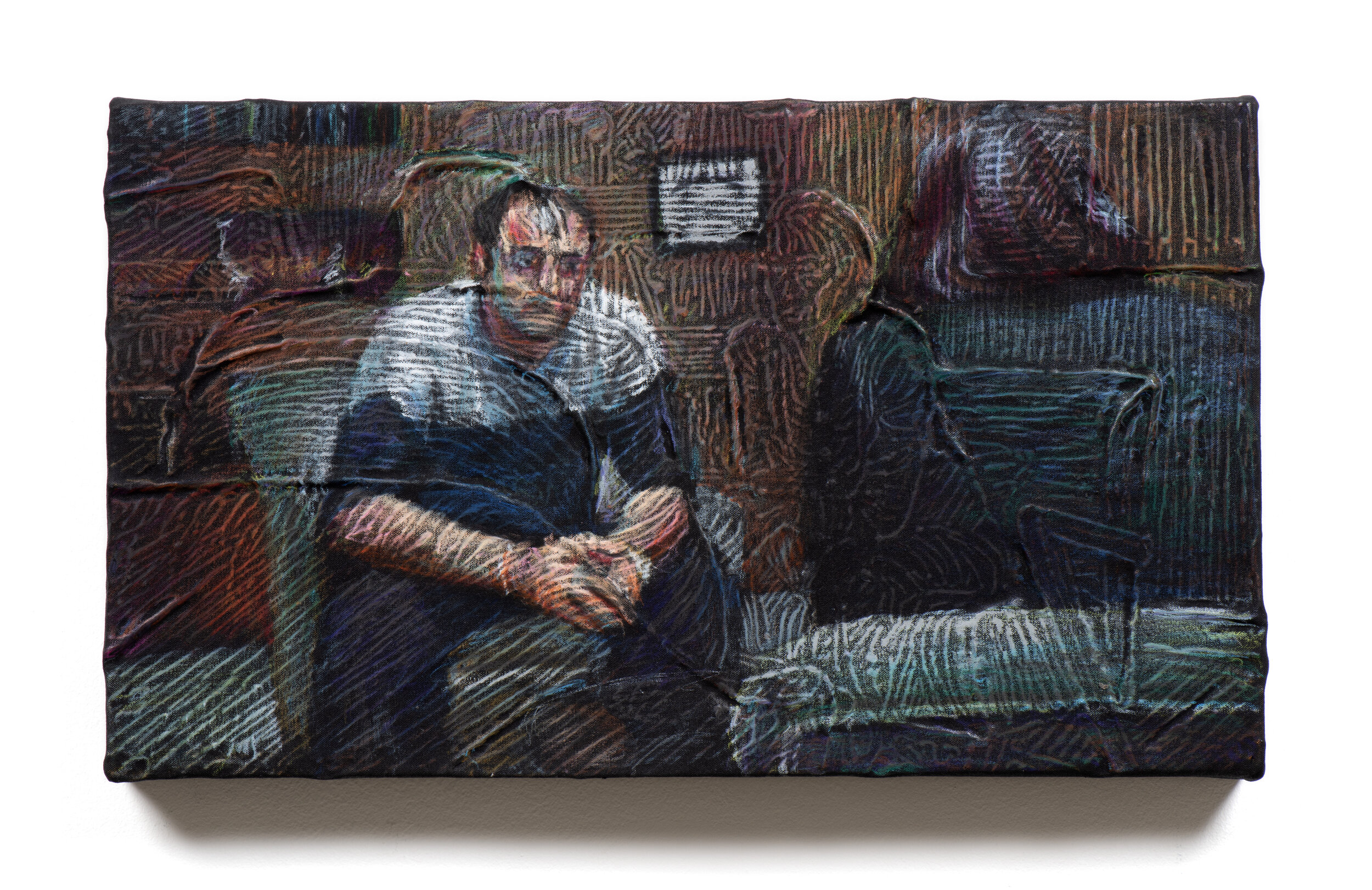
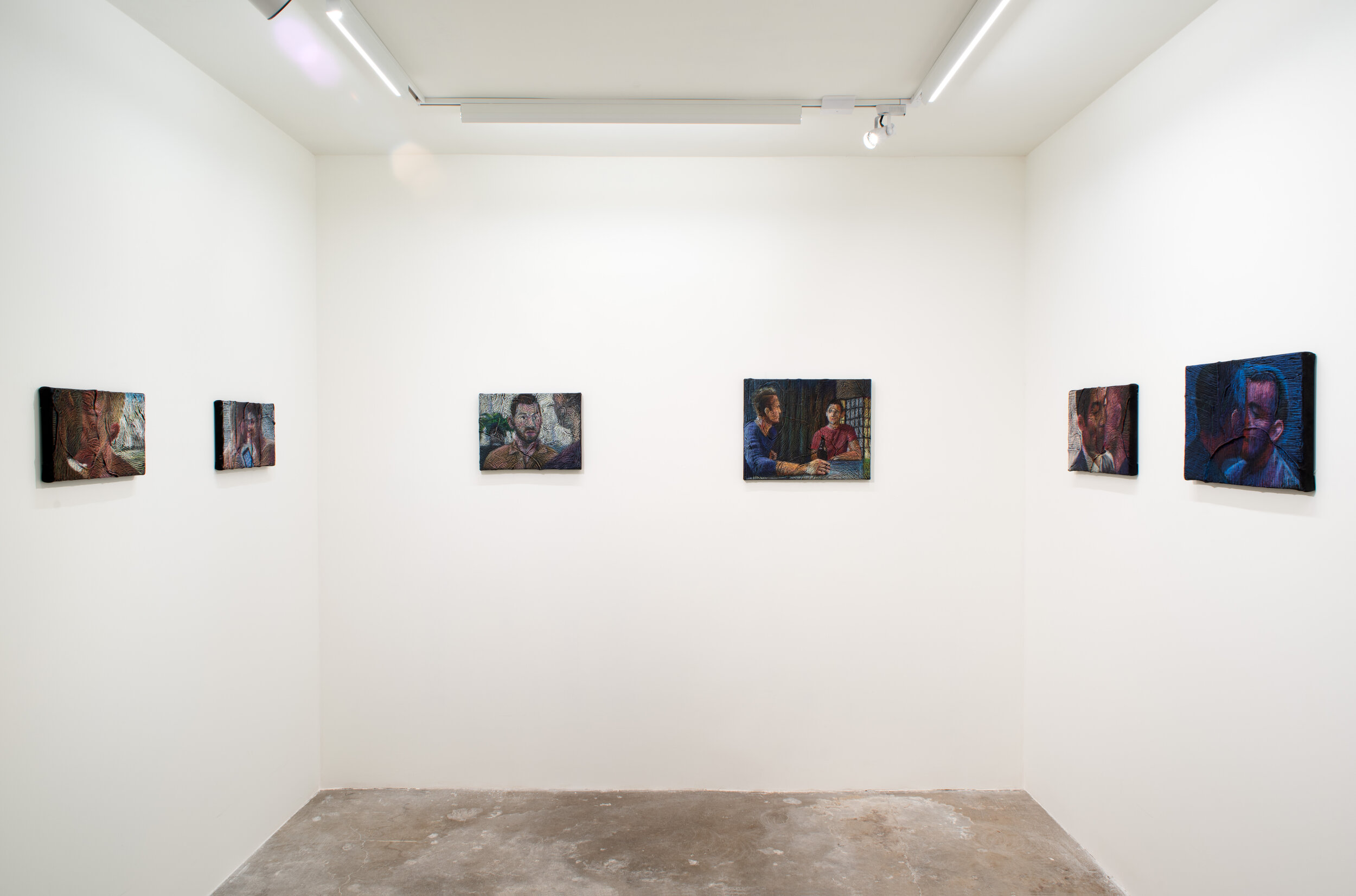
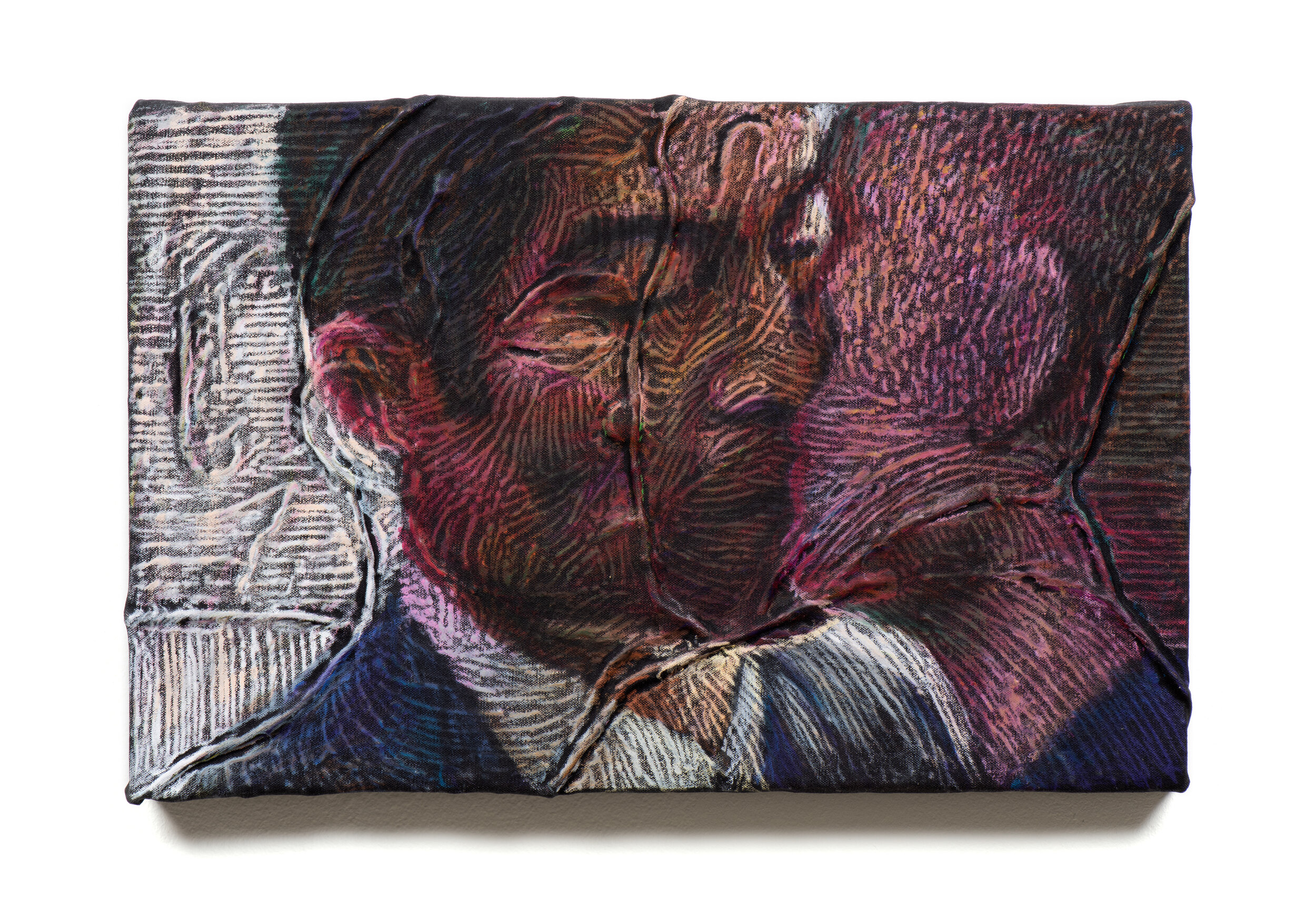
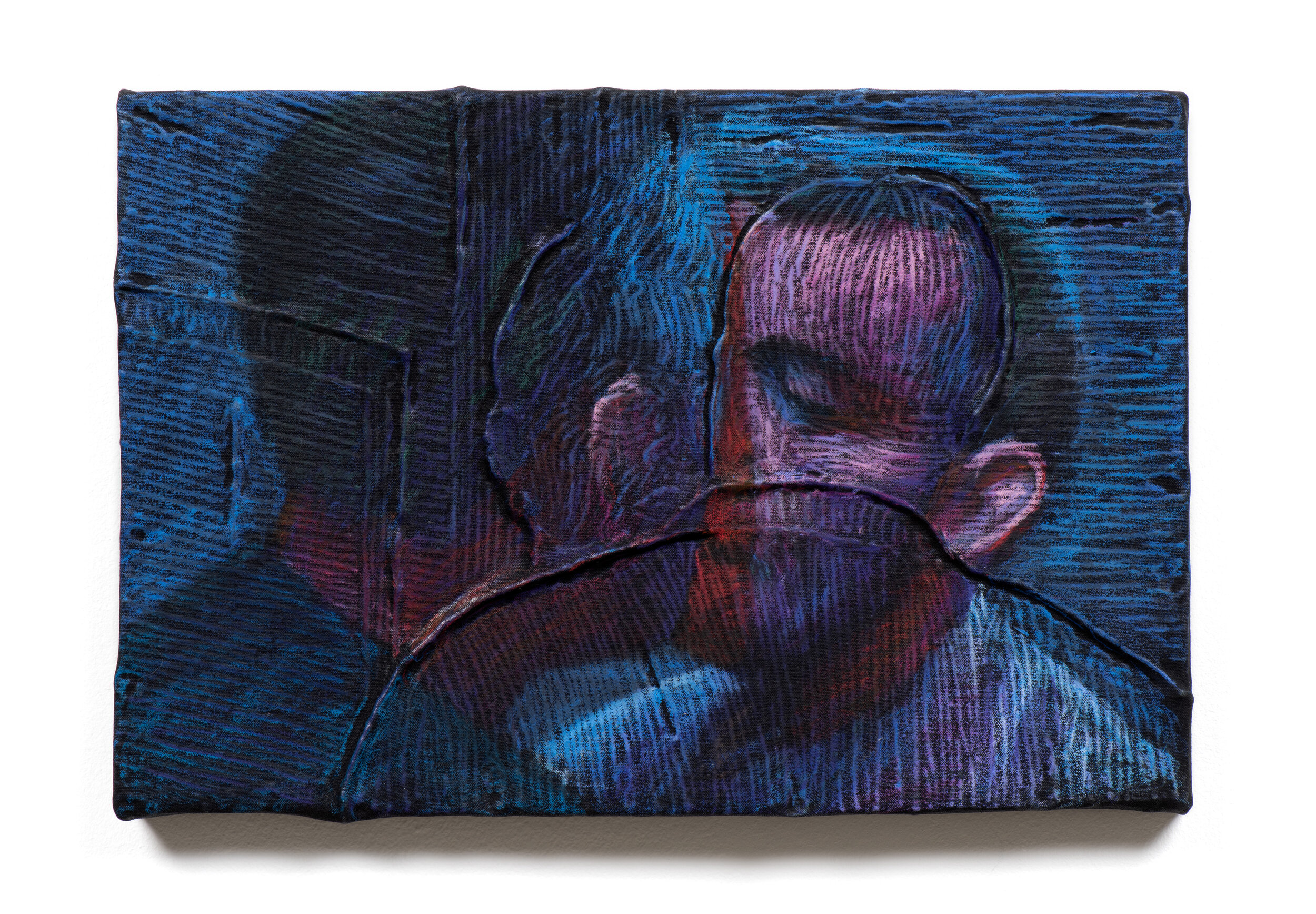
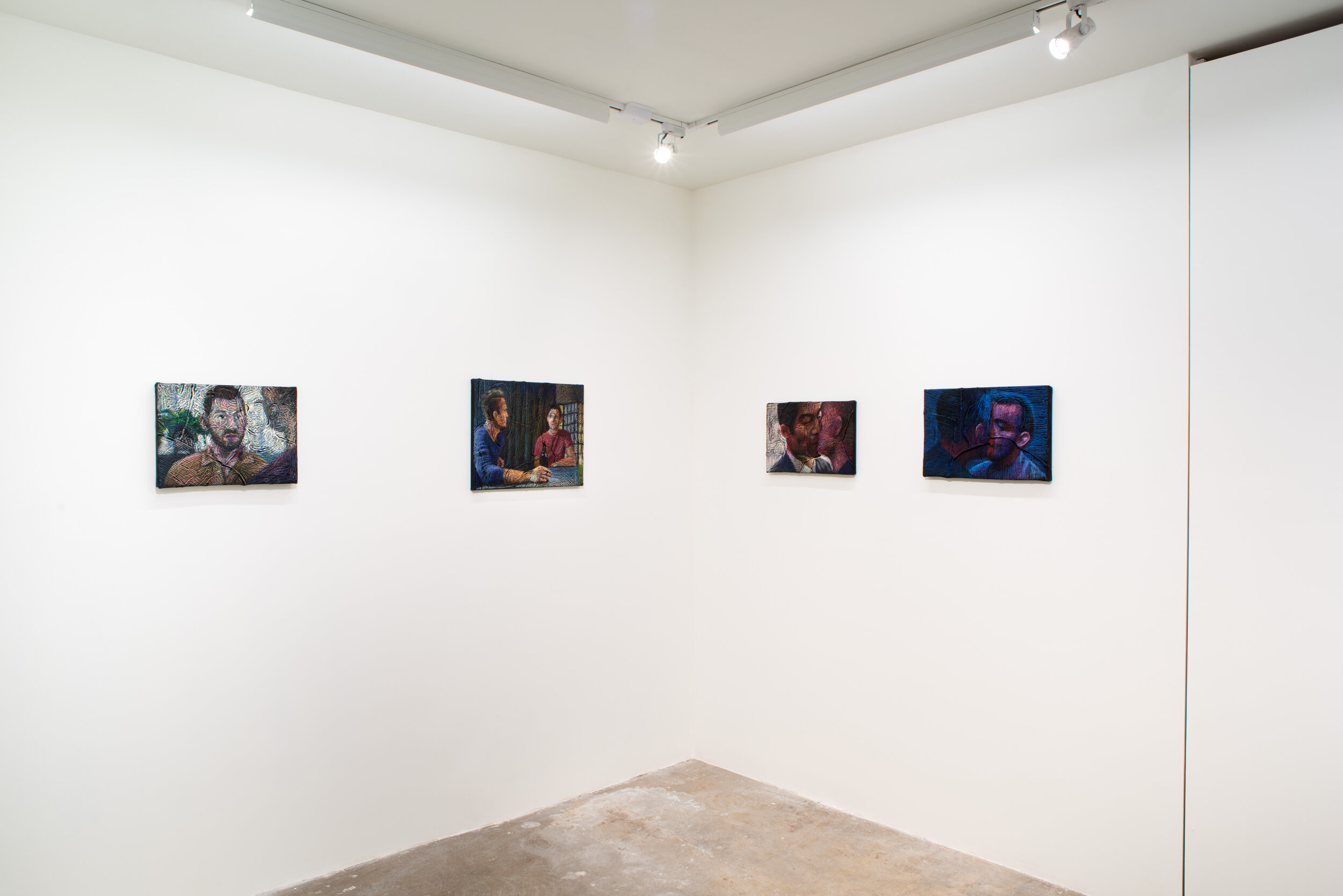
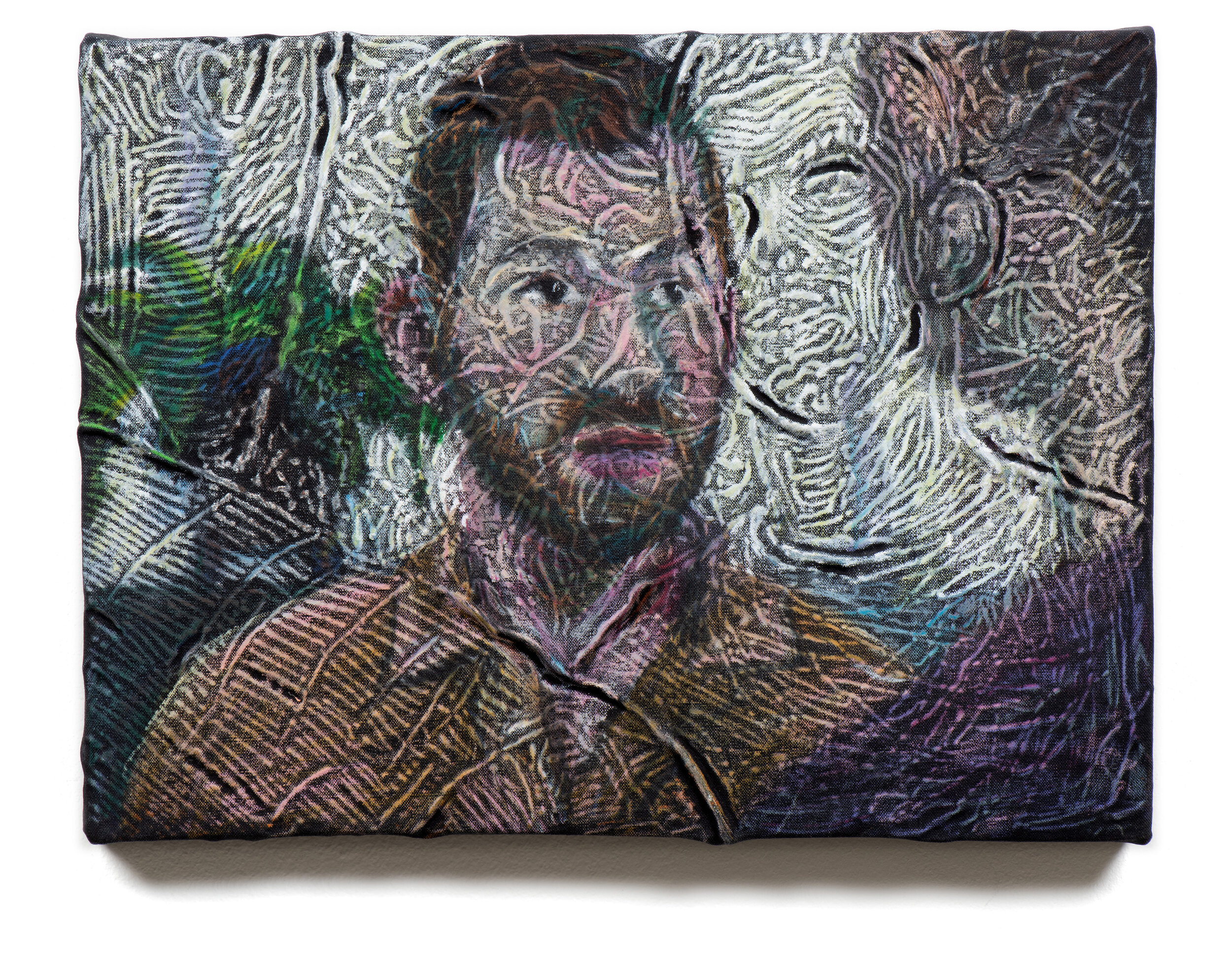
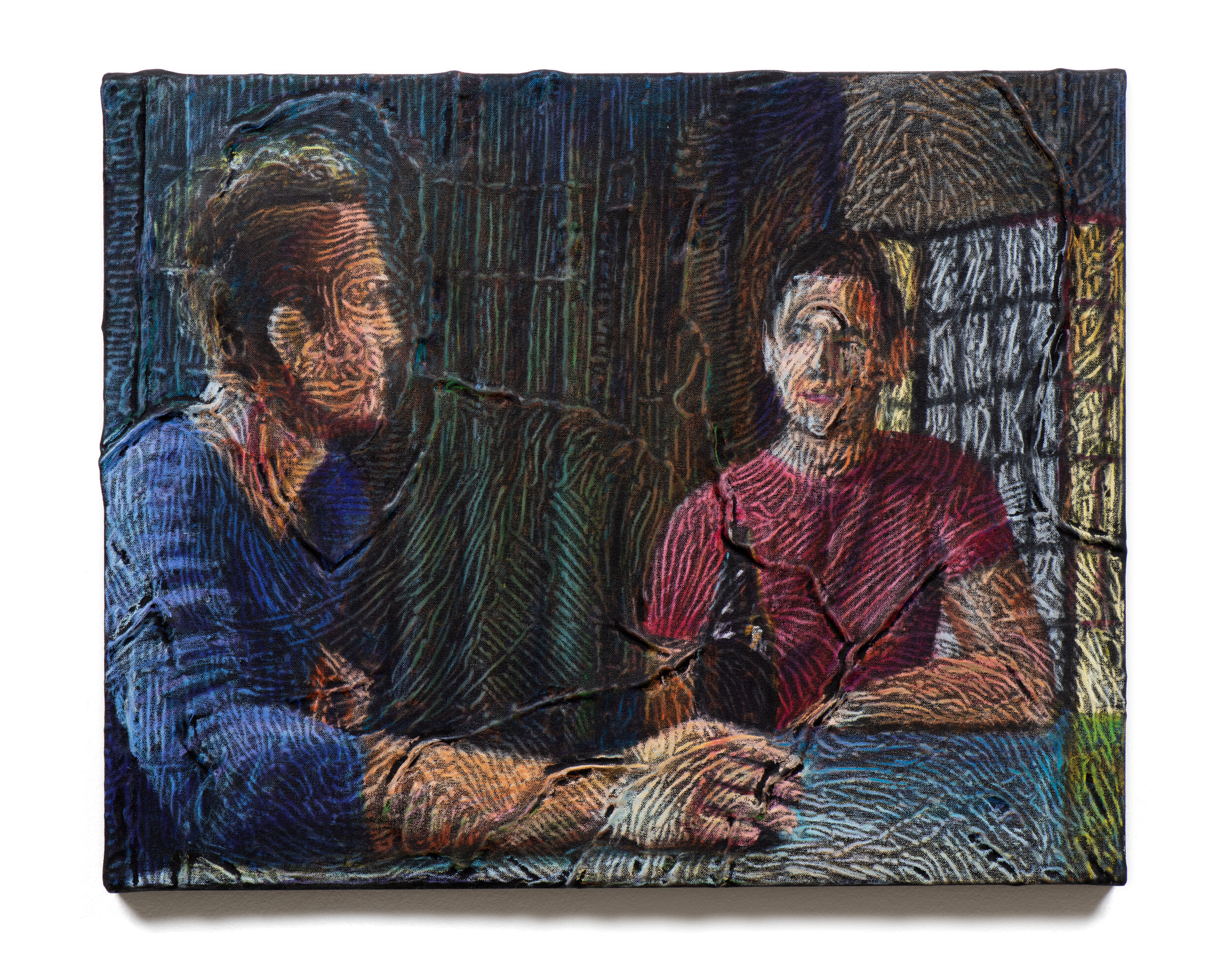
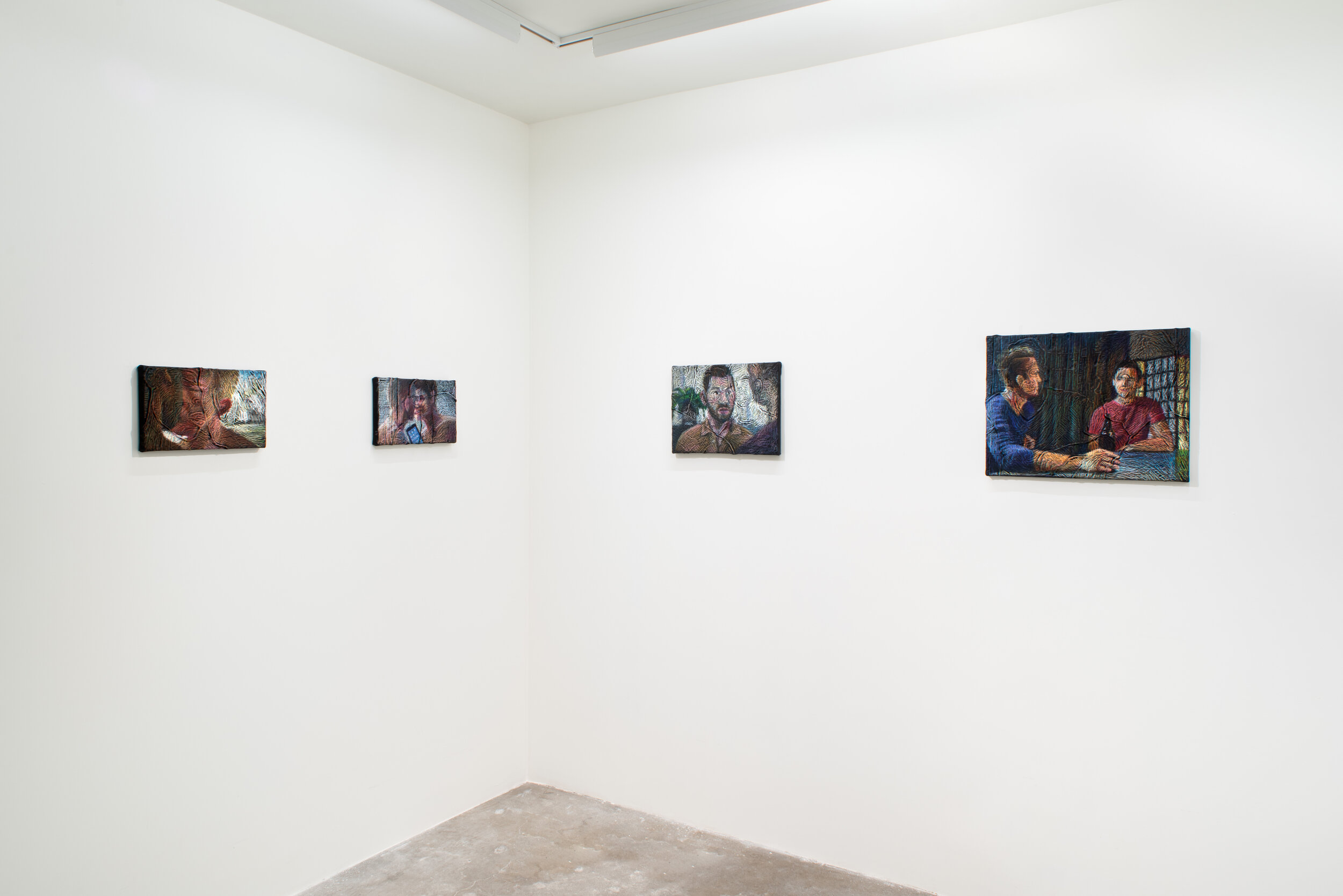
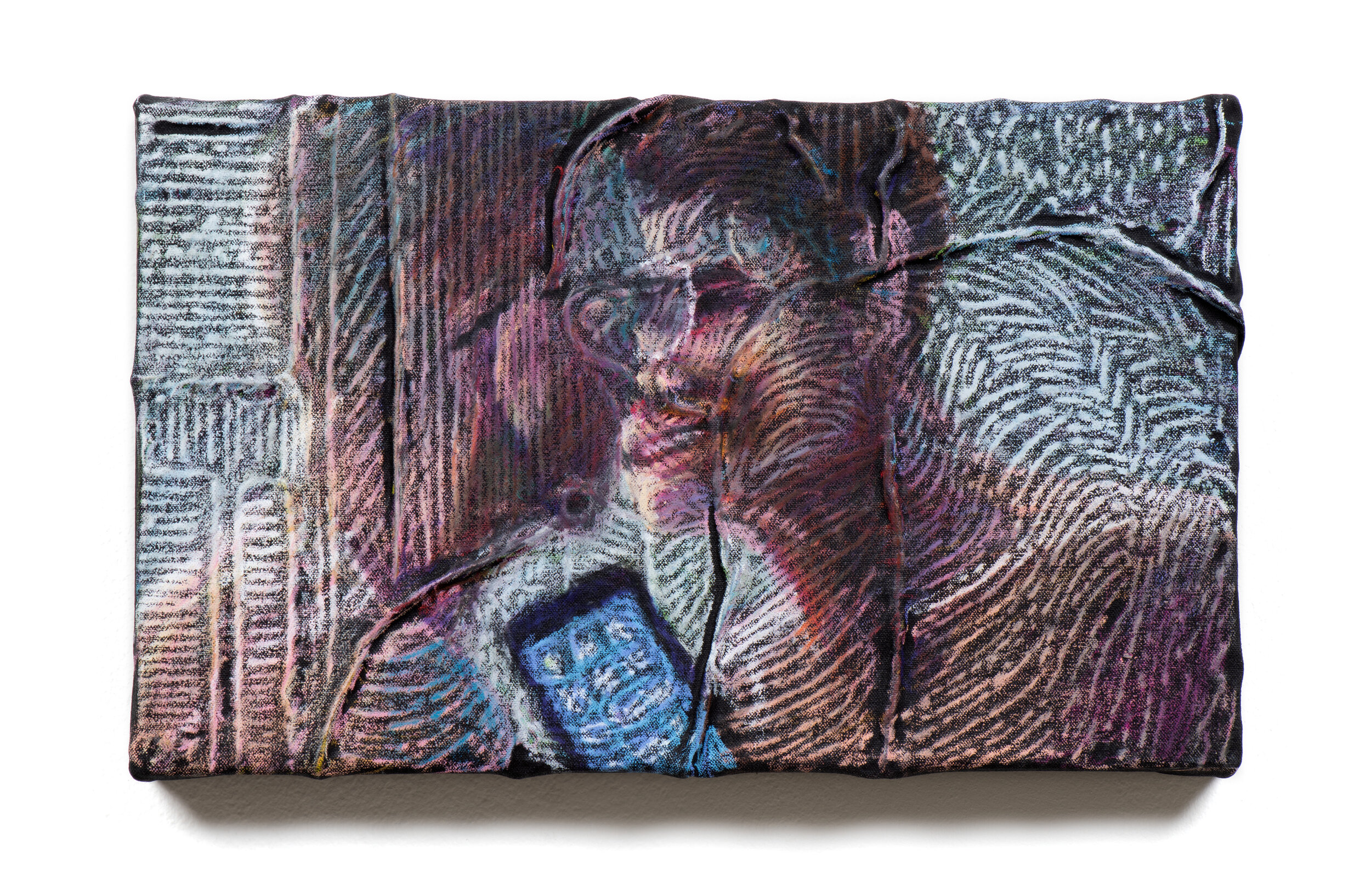
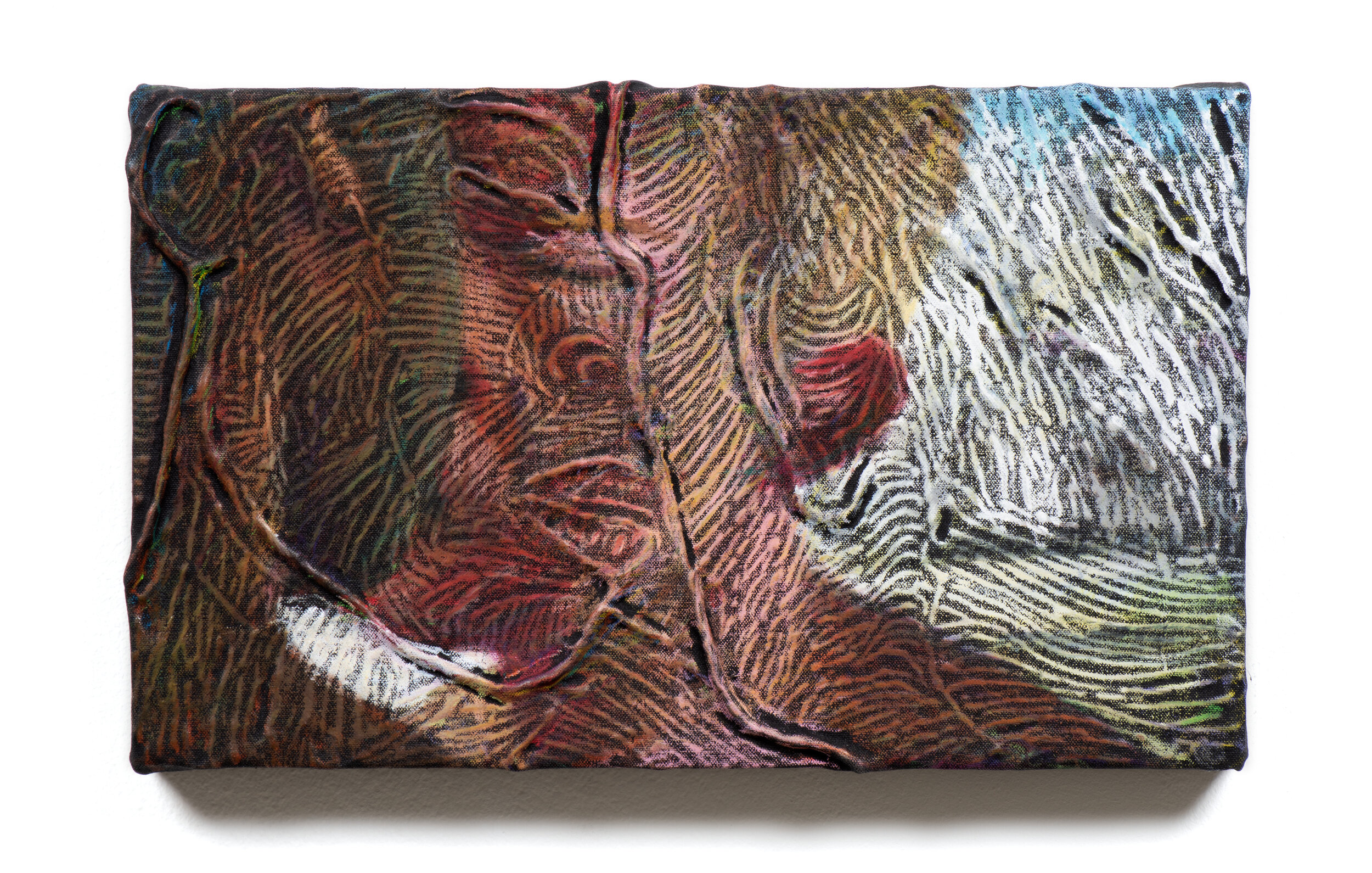
press release
Moskowitz Bayse is pleased to present Dithering, an exhibition of new paintings by New York-based artist Ernesto Renda, marking the artist’s debut in Los Angeles. The works will be on view in our Viewing Room from September 29 - October 17, 2020.
Ernesto Renda uses acrylic ground, low-relief rubbing, and pastel to create paintings in which layered imagery slips in and out of focus, reckoning with and commenting on moving images’ technical and conceptual concerns. First, the artist draws an image in hot glue on board; he then stretches canvas over the board and uses pastel to draw a different image–often the cinematic reverse of the first–over it. The result, visually, is less of a superimposition and more of an alloy; a picture born out of the contentious and fluid relationship between image, color, and texture. The viewer’s eye, in order to see the painting fully, focuses and refocuses between the drawn and rubbed images, activating them both along with the emergent third, holistic image. The ubiquitous black acrylic ground serves to sharpen the relief, creating both a literal and conceptual contrast. Inert, the ground stands in for the screen’s omnipresent blackness while heightening the contrasting colors that emerge from it.
In recent works, the artist isolates shots from a broad range of film and television. The works in Dithering depict kisses and over-the-shoulder-shots, tropes of interpersonal activities where the framing of each subject mirrors the framing of the other. Depicting the space between shots (and their off-screen equivalents), Renda’s painting considers the moving image’s formal possibilities–and limitations–by transcribing them onto an inherently static medium.
In the Over the Shoulder paintings, Renda applies the cinematic concept of the indirect subjective shot, combining the third-person of the narrator with the subjectivity of the first-person character. The subjective shot, in cinematic parlance, unites the viewer’s eye with the character’s; the indirect subjective shot stops just short, incorporating both bodies in what is essentially a point-of-view angle. This angle, used in interview and conversation scenes, probes the viewer to consider both subjects relative to one another. This cinematic strategy relates to the literary idea of free indirect discourse, where the narrator combines objective narration with subjective omniscience: (Ernesto looked at the mess of boxes and luggage. What did he actually value in this world?) With mediated subjectivity and objectivity visually merged, the abstracted image becomes transitional, as though occurring between blinks.
In the Kiss works, British actor, noted collector, and podcaster Russell Tovey repeatedly appears in what becomes a montage of on-screen romance across five paintings. One of the few openly gay actors to actively seek out gay roles, Tovey has become an important figure in British queer culture, as well as the art world more broadly. His prominence in both the British film world, as well as the global art world, affords him metaphoric status in Renda’s paintings. His shifting scripted personae remain anchored by his off-screen roles as both celebrity and art-world impresario, reflecting the constant filmic dualism of Renda’s painted gaze.
Renda arrives at paintings that describe the moving image without ever being about the moving image. Rather, his work speaks to the overlap between the filmed and the felt, itself an approximation of the space between observation and experience. Stopping just short of painting a moving image, Renda’s captured liminal space exists as a frozen expanse of time, distilled into the space between seconds.
